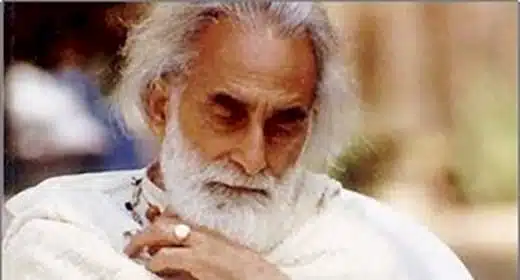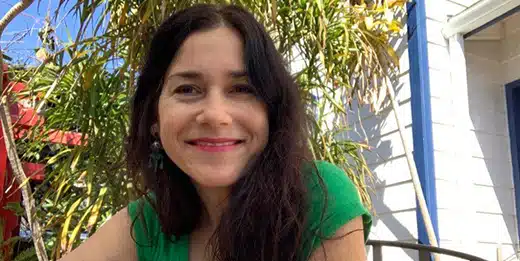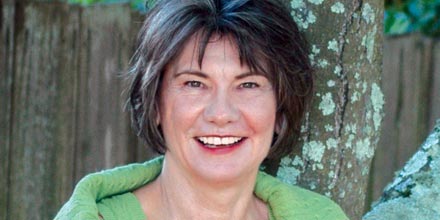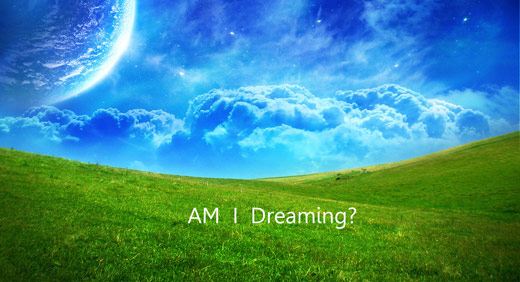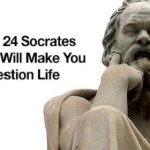by Faye Sakellaridis: Each time we fall asleep, we enter a world more vast and strange than anything we might fathom in waking life…
Many people allow themselves to be swept by the oneiric tide as passive observers, but lucid dreaming, the practice of becoming aware that one is dreaming, puts you in the driver seat. This technique allows the dreamer to manipulate the limitless world of the subconscious. Although lucid dreaming was practiced actively by philosophers and mystics in ancient times, modern awareness of it only resurfaced in the late 20th century.
Robert Waggoner has been lucid dreaming since 1975, and has since established himself as a pioneer in the emerging field of lucid dream research, teaching others how to investigate their inner worlds through dreaming. He is the co-editor of the online magazine The Lucid Dreaming Experience, speaks about lucid dreaming at conferences, workshops, and college classrooms worldwide, and has been interviewed by various media outlets such as CNN , ABC News, and HuffPost. His new book, Lucid Dreaming: Plain and Simple, co-authored with Caroline McCready, has been hailed “a classic” by experienced lucid dreamers.
I had the chance to speak with Robert Waggoner about why lucid dreaming has resurfaced in the 20th century, who practices lucid dreaming, the transformative potential of this practice, and more.
Faye Sakellaridis: What major factors have contributed to the recent, widespread interest in lucid dreaming? What’s different now that draws so many people to this ancient spiritual technique?
Robert Waggoner: When the scientific evidence for lucid dreaming emerged in 1980, everything changed. It clearly showed an amazing paradox; namely, you could be simultaneously asleep, dreaming and consciously aware. Moreover, it gave this ancient spiritual practice of lucid dreaming a sense of scientific acceptance and respect. Lucid dreaming could no longer be denied as impossible.
Since I taught myself in 1975 a simple practice to become lucid, I felt thrilled to read about Stephen LaBerge’s scientific evidence in the January 1981 issue of Psychology Today. Finally, I could come out and talk about this incredible state of awareness and its profound implications.
As LaBerge and others wrote about techniques to induce lucid dreams, the flame of lucid dreaming began to catch fire and people had their own amazing lucid dreams. However, the science of lucid dreaming moved relatively slowly (since actually dreams and lucid dreams receive very little research funding), even though some experienced lucid dreamers began to report fascinating lucid dreams of consciously acquiring precognitive or clairvoyant information, physically healing themselves or another, interacting with the deceased and engaging spiritual awareness – and they wanted to discuss and explore these exciting new developments! Others (who may have felt they needed to defend lucid dreaming from non-scientific and spiritual concerns) denied the possibility of these lucid dreams, and basically ignored its history as a tool of spiritual investigation and spiritual growth.
However in the past two decades or so, the web has allowed for lucid dreaming ‘support groups’ to flourish in various forums, and Hollywood has fanned the flames with movies like The Matrix and Inception. Finally, books like Lucid Dreaming: Gateway to the Inner Self and others, showed people how to lucid dreaming more deeply and explore the psyche, consciousness and the nature of reality.
Together this has spread the flame of lucid dreaming internationally.
What is the most surprising place where you’ve seen lucid dreaming currently practiced?
Lucid dreaming seems very democratic. Whether you sleep in a penthouse on Park Avenue, a yurt in Inner Mongolia or a hacienda in Argentina, you have a similar chance of becoming lucidly aware in a dream, assuming that’s your intent. Lucid dreaming can find you wherever you are, regardless of class, status, race or creed. It’s an equal opportunity mind-blower.
I’ve given lucid dreaming workshops in places like Helsinki Finland, Bogota Colombia and even Viroqua Wisconsin (population 4,396). Also, I’m seeing lucid dreaming books translated into Chinese, Korean, Czech, Finnish and other languages, so the excitement continues to spread. If you have had a lucid dream, it probably ranks as one of your life’s ‘peak experiences’.
The first documentation of lucid dreaming was found in the ancient Hindu text, the Upanishads. Descriptions of lucid dreaming have also been found in ancient Greece, Buddhist texts, Ancient Islam, and seventeenth century Enlightenment philosophy. Why was the practice so rare in the modern West until recently?
Perhaps the modern West shared some of Christianity’s mixed feelings about dreaming in general, and needed the hard scientific evidence for lucid dreaming, which came in the late 1970’s. And perhaps Christianity’s focus on salvation as the primary goal sent it on a different path, than religions which focused more on understanding the nature of reality (and accepted lucid dreaming as a tool to investigate that).
Although the Dutch scientist, Frederik van Eeden, spoke about lucid dreaming in 1913 to the Society for Psychical Research in London, and tried to generate interest, he had little success. Even earlier, the Frenchman, Marquis d’Hervey de Saint-Denys, wrote in 1867 the book, Les Reves et les Moyens de les Diriger: Observations Pratiques(translated as Dreams and the Ways to Direct Them: Practical Observations). But their efforts failed to spark a widespread investigation. Even Sigmund Freud ignored them.
Richard Linklater’s “Waking Life” used the premise of lucid dreaming to lead the viewer through a mosaic of different philosophical ideas. How important was that film in bringing awareness to lucid dreaming?
For some, ‘Waking Life’ woke them up to the existence of lucid dreaming, and its philosophical implications. If you can become aware of dreaming while in a dream, and achieve that state of meta-awareness, then what does it say about the other 99.9% of the time, when you fail to ‘get it’ and go along with the dream? Could waking life be a kind of trance that we go along with too? Does an actual actuality exist?
This reminds me of a radio show I did on lucid dreaming with Iowa Public Radio. A man called in and said that he began to practice Soto Zen and without any intent, naturally began to have lucid dreams frequently. So you can see how the simple act of reflecting on big questions or even koans may initiate a more reflective state, and result in lucid dreams.
Unfortunately for this guy, one day he told his Zen master about the lucid dreams, and the Zen master told him, ‘Let it go!’ So he did, and the lucid dreams ceased.
Now there are smartphone apps that help people hone their lucid dreaming skills. What role do you think technology can play in lucid dreaming?
Apps exist for reality checks, binaural beats, dream signs, audio cues and more. For some, it truly helps them to focus on becoming lucidly aware. But remember: people have been lucid dreaming for thousands of years before smartphones.
Using the tool of mindful awareness can be even more powerful than apps – and it doesn’t require batteries or a data plan.
How different is the neurological state of a brain during lucid dreaming from regular dream states?
In the last few years, some wonderful neurophysiological studies of lucid dreaming have appeared, and I note these in my new book, Lucid Dreaming Plain and Simple. In one study led by researcher Ursula Voss, they used a 19 channel EEG to measure brain activity when lucid dreaming. The results led them to call lucid dreaming “a hybrid state of consciousness with definable and measurable differences from waking and REM sleep, particularly in the frontal areas” of the cerebral cortex (portions of which showed increased activity while lucidly aware). This “hybrid state” shows a special neurological state in which dreaming and conscious activity occur simultaneously.
In a 2012 study, a scientific team used EEG and fMRI technology to evaluate brain activity when lucid dreaming. Research member, Michael Czisch told a Science Daily reporter that the lucid dreamers’ cerebral cortex show much increased activity in the right dorsolateral prefrontal cortex, the frontopolar regions and the precuneus. These portions of the brain are commonly associated with self-assessment, evaluating thoughts and feelings and self-perception (respectively, according to Czisch). The fact that they showed activity during a lucid dream supports lucid dreamers’ claim of being able to make choices, conduct experiments and explore the dream state when lucidly aware.
What first drew you personally to lucid dreaming?
At first, lucid dreaming seemed like a magical theater of the Mind, where I could fly through walls, do magic like Harry Potter and explore the dream symbols. But then, I came to discover an ‘awareness behind the dream’ (that is, a non-visible awareness), which I could make requests of like, ‘Show me something important for me to see!’ or ‘Let me experience unconditional love!’ When a deeply profound and intelligent response would occur to those requests (and utterly change the entire dream scene), I soon realized that lucid dreaming allows you to engage your larger awareness, or the conscious unconscious.
That discovery took me deeper. And I kept following the path, even to the point of going beyond lucid dreaming.
Please share a striking example of how lucid dreaming has transformed someone’s life.
During a 30 day online workshop that I conduct through GlideWing, I noted that one woman, a long term Buddhist meditator, had not had a lucid dream by mid-course. I sent her a message and asked, ‘What would you do if you became lucid tonight?’ She responded that if she became lucid, she would send healing energy to her elderly mother who lived in a nursing home about 1,000 miles away. I asked if her mother had agreed to an intervention like this, and she replied that her elderly mother was in such pain, that she had agreed to having prayers and other assistance on her behalf.
So I gave this attendee some special attention to help her become lucid. Within a couple of days, she had her first lucid dream but became so excited that she popped out. The week after, she had two lucid dreams, and stopped in both of the lucid dreams to send healing energy to her mother.
The morning after this second successful lucid dream, the phone rang. Her elderly mother called and said, “You better sit down, I have some wonderful news.” Her mother told her that for the first time in two and a half years, all of her bedsores had disappeared. For the first time in two and a half years, she felt no pain.
Needless to say, the lucid dreamer felt amazed. And so did her mother, when the daughter explained how in lucid dreams, she had used her intent to send healing energy.
Thankfully, lucid dreaming allows for scientific experimentation, so that these kind of events can be explored thoughtfully. But if you ask me, lucid dreaming is a revolutionary psychological tool to explore the nature of the psyche, consciousness and this big dream (or mental co-creation) we call reality.



